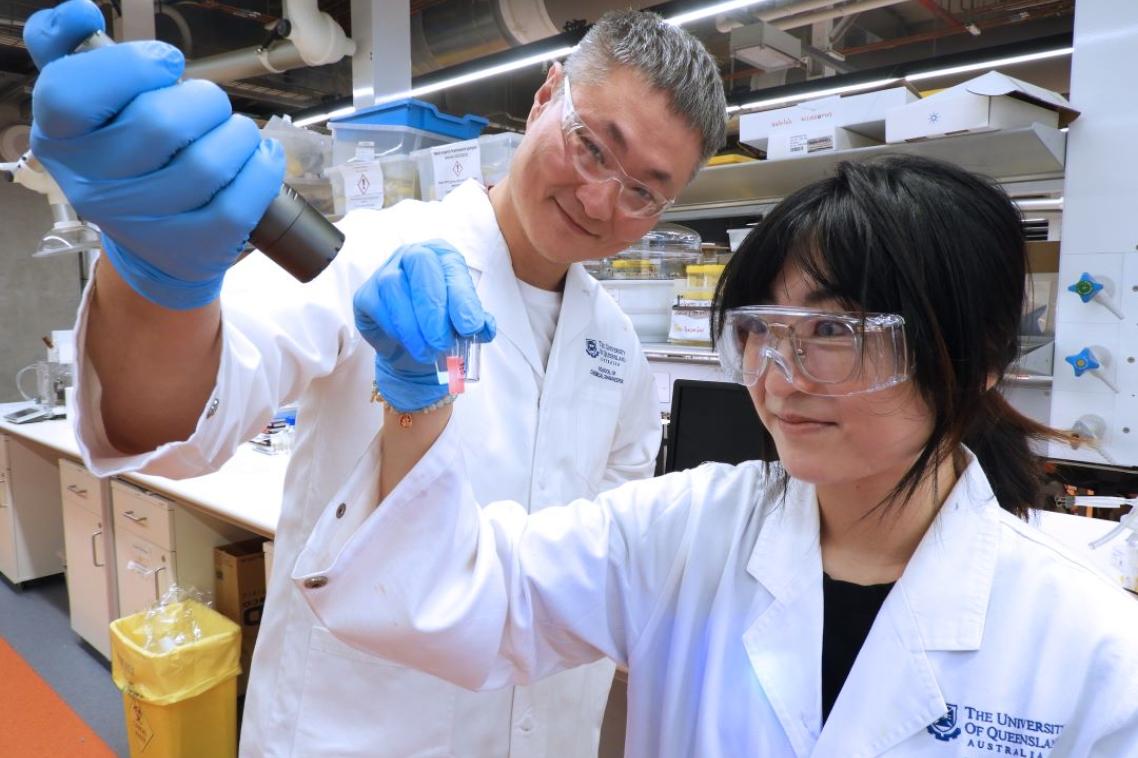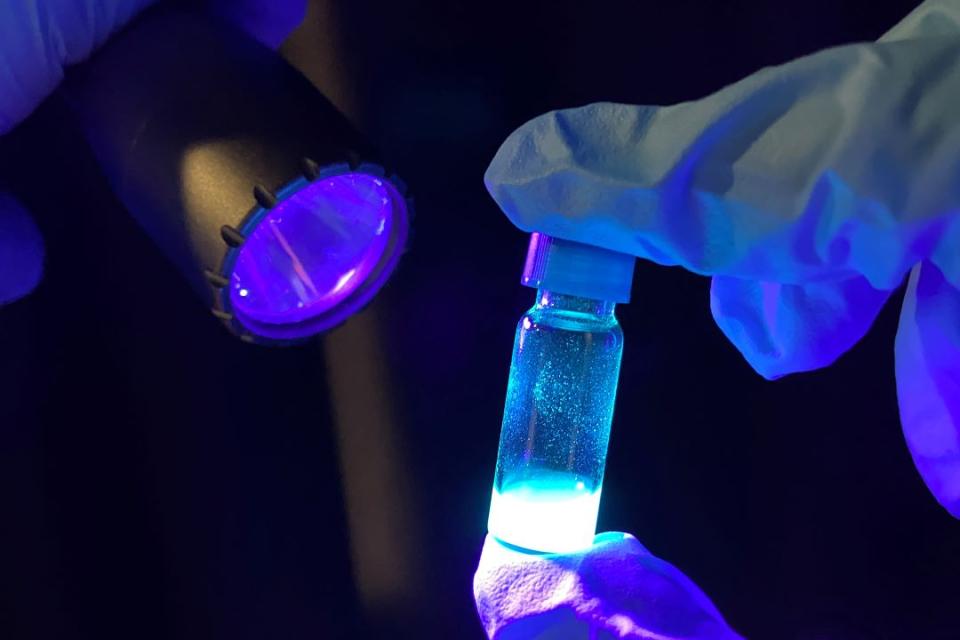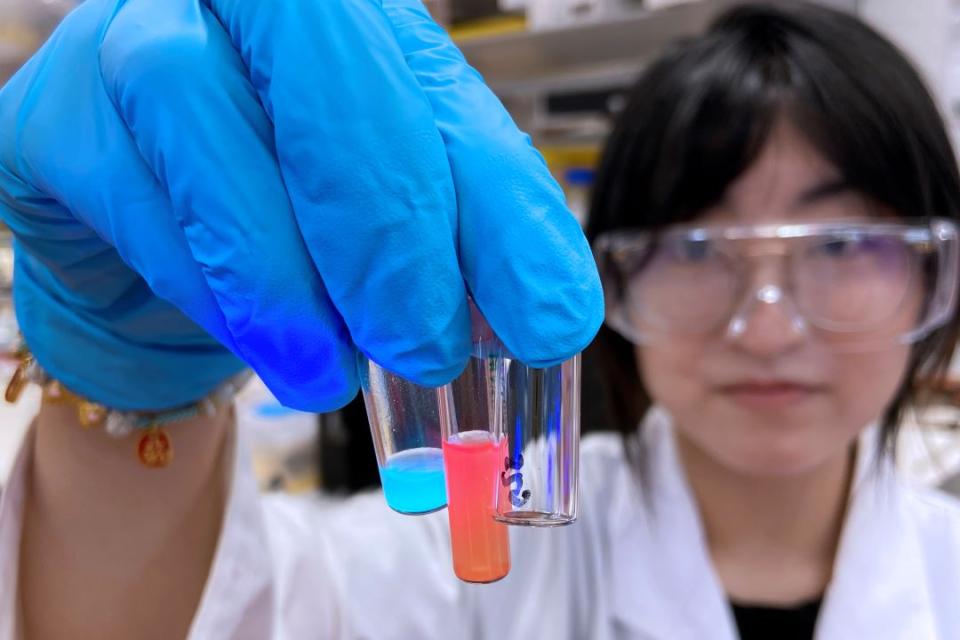Light conversion tech to power wearable X-rays for children

Key points
- UQ researchers are working to produce an X-ray imaging detector that can be worn in a hoodie or blanket to provide a quick and accurate picture of a child’s lungs
- Associate professor Jingwei Hou said the project was inspired by the thought of his own young children being distressed by a noisy MRI machine and potentially having to be sedated or restrained in order to obtain an accurate scan
- The project has potential to be adapted for a range of medical imaging applications, including other paediatric conditions and adult diseases where rapid, high-resolution imaging is critical
Light conversion technology developed by University of Queensland researchers will be used for wearable X-ray devices that make respiratory scans more comfortable for young children.
Associate Professor Jingwei Hou from UQ’s School of Chemical Engineering has been awarded a $1.6 million Investigator grant from the National Health and Medical Research Council (NHMRC) to produce a flexible, glass-based X-ray imaging detector that can be worn in a hoodie or blanket to provide a quick and accurate picture of a child’s lungs.

The patented quantum dot hybrid glass technology that will be used in Dr Hou's research, in liquid form.
Dr Hou said the project was inspired by the thought of his own young children being distressed by a noisy MRI machine and potentially having to be sedated or restrained in order to obtain an accurate scan.
“Staying still during a lengthy scan under a big machine isn’t easy for adults, let alone young, overwhelmed children who are already unwell and distressed in an unfamiliar and daunting clinical environment,” said Dr Hou.
“Unfortunately this often means sedation or general anaesthesia is required to keep children still so the scan is accurate, which introduces additional risks and complexities.’’
Dr Hou said scanning was a crucial process in the treatment of conditions such as respiratory distress syndrome (RDS), bronchopulmonary dysplasia (BPD), and chronic lung disease, which are among the most critical health issues faced by premature babies, infants and children under 5 - particularly First Nations children.
But he said current X-ray technology merely captures a flat projection of a 3D object, meaning numerous scans from different angles are required to render computed tomography (CT) results, potentially leading to high radiation exposure.
To solve the issue, Dr Hou will adapt his patented quantum dot hybrid glass technology into thin film strips that that conform to the contour and movement of a child’s body and can be worn like a favourite blanket or jumper.

UQ researcher Yuelei Chen with the patented quantum dot hybrid glass technology that will be modified to work as a wearable x-ray.
“My quantum dot technology makes use of a family of materials known for their unparalleled light conversion and emission efficiency,” Dr Hou said.
“By assembling these materials into thin, flexible X-ray detectors I can create a wearable X-ray detector that is both comfortable while still providing high-resolution imaging of lung structure.”
An ARC Future Fellow, Dr Hou said the project has potential to be adapted for a range of medical imaging applications, including other paediatric conditions and adult diseases where rapid, high-resolution imaging was critical.
However the most pressing issue in his mind is to ease the discomfort and stress faced by young children during an already difficult time.
“As a father, it is not nice to think of my children going through an uncomfortable scanning process that could involve sedating or restraining them,” Dr Hou said.
“For a while I have thought there has to be a better way of doing this, and now I think we’ve found it.”
Dr Hou’s Investigator grant covers salaries and costs for 5 years of research and testing, after which it is hoped the system will be ready for clinical trials.
Related articles

Thousands of Queensland reef photos lead to worldwide change

Staying physically active cuts risk of early death by 40 per cent
Media contact
UQ Communications
communications@uq.edu.au
+61 429 056 139
